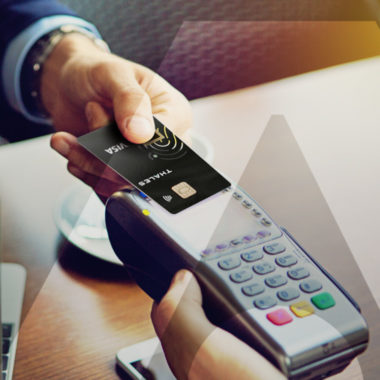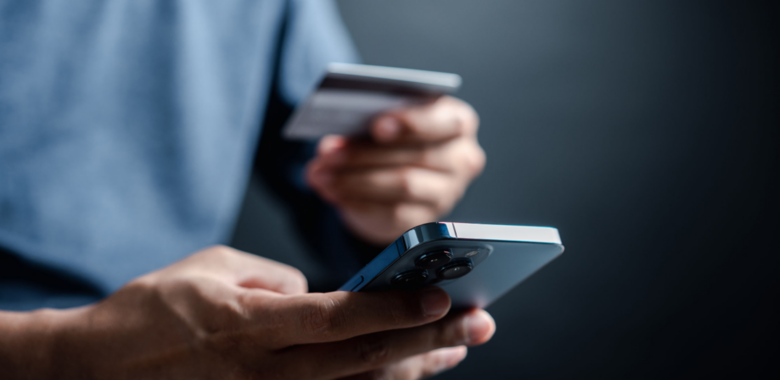It goes without saying, but smartphones are everywhere these days. In fact, in 2021, there are now an estimated 3.8 billion smartphone users – which equals 48.5% of the world’s population. For these consumers, smartphones have become the default way to carry out important everyday tasks; from ordering food and buying clothes, to accessing online accounts and paying for goods in-store.
However, while mobile provides a boost in term of convenience, not everyone is a mobile payment user – with an estimated 950 million people making mobile payment transactions in 2019. When compared to the number of smart phone users, this figure is still relatively small.
What’s more, because the mobile phone is not a universal payment device e.g., it’s not accepted everywhere and relies on a battery, most mobile payment users will also have a bank card as back-up. Continuing to innovate and make improvements to bank cards is therefore essential, so that this part of the financial services industry can cater to the needs of the 3.8 billion people across the globe who want increased security and convenience when they make physical transactions. This is where biometric-enabled bank cards can provide a great bridge, and here are three important reasons why:
They come with in-built powerful security mechanisms
With the rise of financial services fraud, such as phishing attempts or PIN stalking, people are increasingly concerned about being targeted by malicious actors and losing their hard-earned money. Indeed, the percentage of people fairly or very concerned over bank card or online banking fraud in EU countries in 2019 was around 67%.
Given this, it is important that banks provide reassurance to consumers that their information is as difficult as possible for a fraudster to access – biometric–enabled bank cards are perfectly suited to this role. With the fingerprint sensors on the biometrics cards, the ability to authenticate payments is based on a trait unique to each user and is unable to be replicated.
They’re convenient and easy to use
For consumers so used to buying whatever they want at the click of button, any additional security measures on bank cards need to be supremely convenient too.
The additional level of security of the biometric bank cards unlocks more usage capabilities, such as being able to remove limits on contactless payment transactions. Because biometric verification is evaluated and certified to be at least as secure as inputting a PIN code, which we use to authorise high value transactions, people can pay for high value items with their finger without compromising security.
Moreover, the option to avoid physical contact with the card reader is of great value for many in these socially distant times. As with contactless transactions, with a biometric card, users only need to hold their device close to the point of sale terminal to authenticate their purchase. The difference is, not only do biometric cards payments help reduce the spread of germs that live on surfaces, but they are also not restricted by a maximum transaction limit or number of contactless transactions – as is the case with contactless cards.
In terms of enrolling a fingerprint onto the card, this is also a quick and easy process that can be done in a matter of minutes at home or in branch, and only needs to be carried out once. The card is inserted in a small sleeve (shipped with the card) that provides the energy to run the registration process. Then, all the cardholder has to do is simply present one finger to the sensor several times to capture all the possible angles and fingerprint details. Once the green light on the card confirms the registration, the user only needs to input her/his PIN code once more during the first biometric transaction to verify and finalise the operation.
They’re built to provide enhanced data protection
Another key driver of user trust and, therefore, adoption is ensuring that customer data, details and money, are securely protected by the biometric card.
Luckily, these new generation cards are built with data protection at their heart. When enrolling a fingerprint, consumers can rest assured that fingerprint reference data is only stored in the card’s secure chip. This does not include any biometric data as such but instead is a mathematical conversion of unique points, representing your fingerprint reference data. It is impossible to rebuild a fingerprint image from this data, meaning that even if your card was stolen, a malicious actor could not replicate your fingerprint.
In addition, no personal data is held on a bank’s servers or sent over the air to a centralised database. If the card gets lost or stolen, customers will need to enroll their fingerprint again when they receive a replacement.
Another advantage is that banks can rely on the secure authentication of the cardholder, and benefit from increased trusted transactions, generating less cumbersome false declines for the users.
Looking at these benefits together, it’s clear to see why biometric cards are setting new industry standards and increasingly issued by major banks as they provide the perfect bridge between the current suite of payment options, and the future. Not only do they combine the all-in-one convenience and usability of smartphones, but they also reassure consumers that security is at the heart of the card with no additional effort on their part than simply putting a thumb on the card.
If you’re interested to learn more about our biometric cards and how they will impact you, visit our biometrics in banking webpage.



